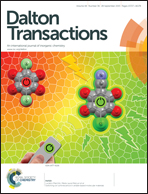Negative thermal expansion and anomalies of heat capacity of LuB50 at low temperatures
Abstract
Heat capacity and thermal expansion of LuB50 boride were experimentally studied in the 2–300 K temperature range. The data reveal an anomalous contribution to the heat capacity at low temperatures. The value of this contribution is proportional to the first degree of temperature. It was identified that this anomaly in heat capacity is caused by the effect of disorder in the LuB50 crystalline structure and it can be described in the soft atomic potential model (SAP). The parameters of the approximation were determined. The temperature dependence of LuB50 heat capacity in the whole temperature range was approximated by the sum of SAP contribution, Debye and two Einstein components. The parameters of SAP contribution for LuB50 were compared to the corresponding values for LuB66, which was studied earlier. Negative thermal expansion at low temperatures was experimentally observed for LuB50. The analysis of the experimental temperature dependence for the Gruneisen parameter of LuB50 suggested that the low-frequency oscillations, described in SAP mode, are responsible for the negative thermal expansion. Thus, the glasslike character of the behavior of LuB50 thermal characteristics at low temperatures was confirmed.


 Please wait while we load your content...
Please wait while we load your content...